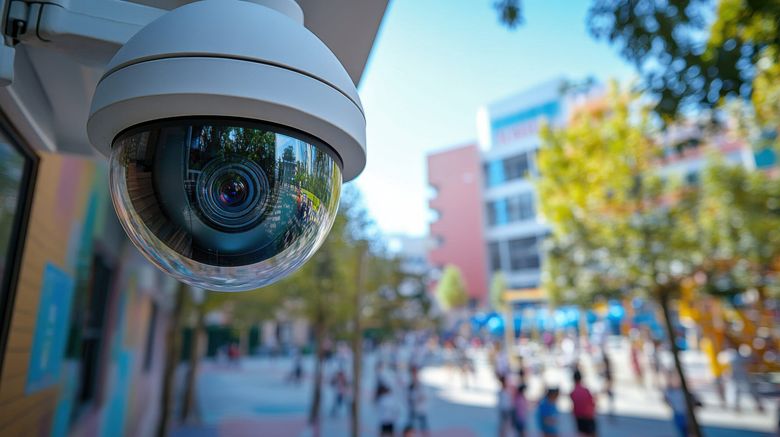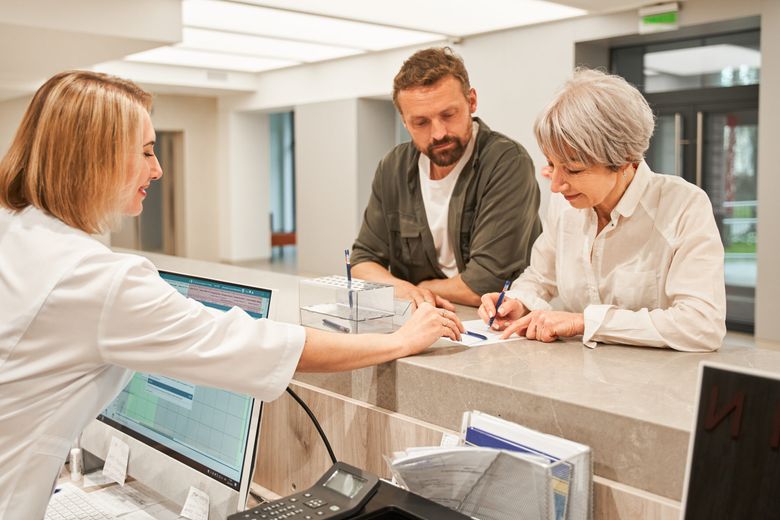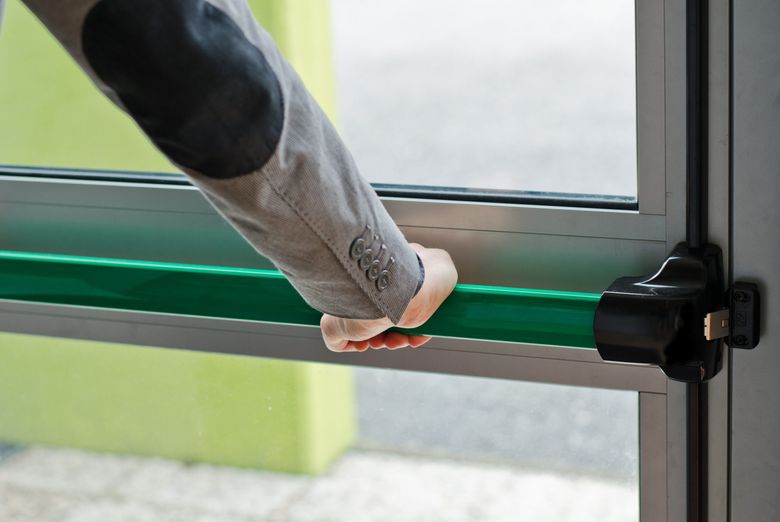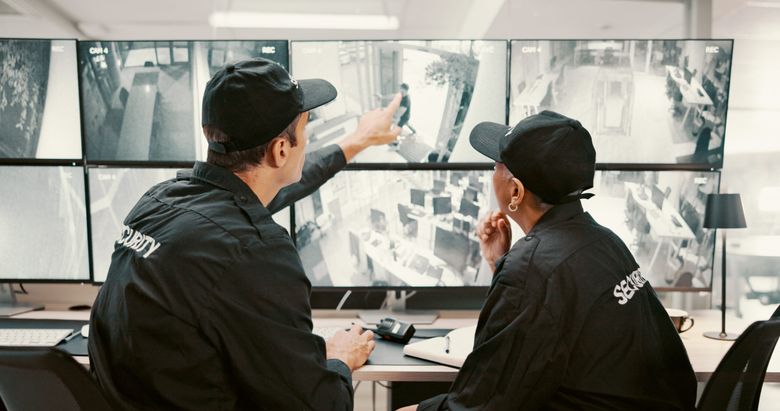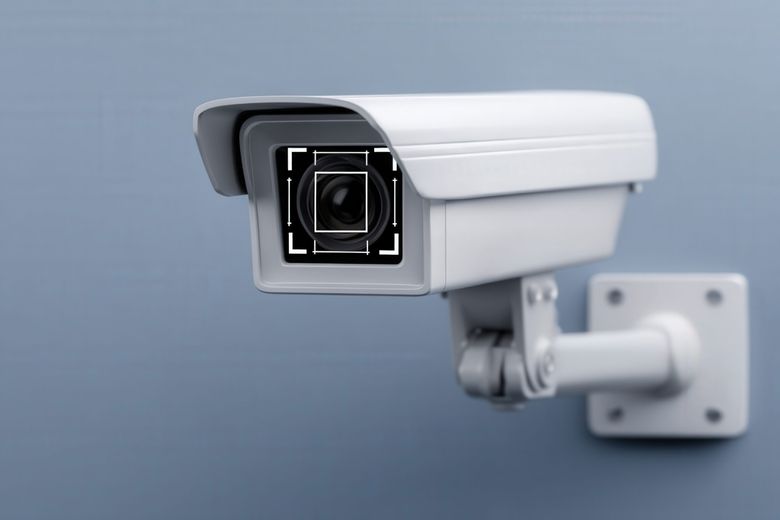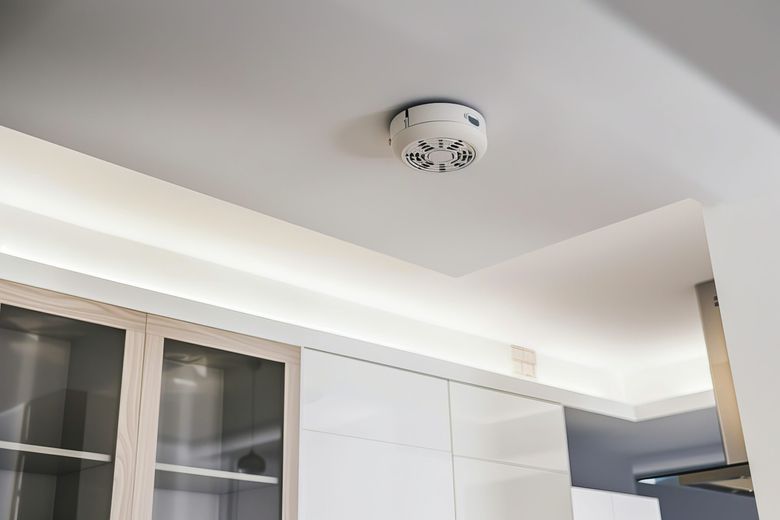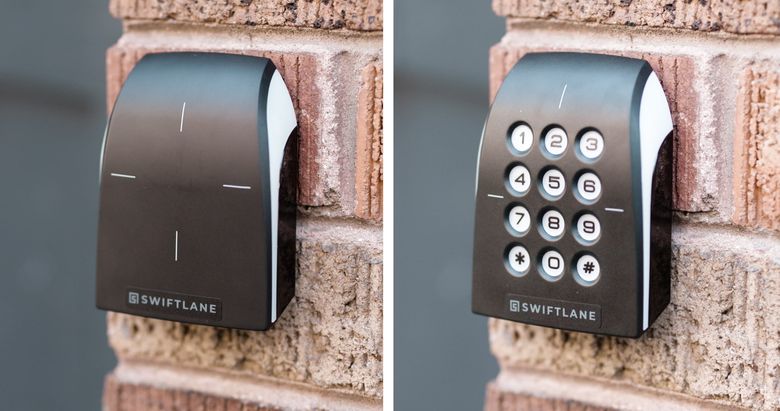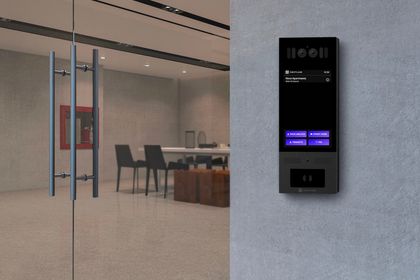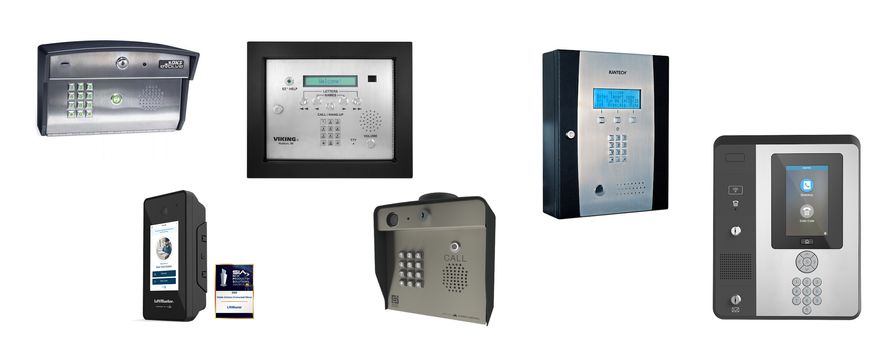If, like me, you’ve reached a certain age, you might think nostalgically of a time when school security needs were quaint by today’s standards. Colleges had open campuses and a small safety force. K-12 schools opened their front doors to the community, and a friendly front office secretary signed in guests on paper visitor forms. Perhaps a faculty member was assigned to monitor the halls at various times of the day. Such a basic school security system met the community’s needs, leaving parents with peace of mind.
In just a few short decades, the fundamentals of school security have evolved substantially. While school shooting concerns represent one extreme end of the spectrum, there is a growing list of everyday concerns. These include protecting school property, stopping student vaping, keeping unauthorized individuals off school grounds, and defending against cyber attacks. In turn, school security systems have evolved to meet today’s myriad challenges.
We assembled this guide to help make sense of the options today for security systems for schools and college campuses.
Whether you are a college campus administrator, a district school board member, or part of the administration of K-12 schools, we share the need-to-know information about options in 2025 and beyond.
Table of Contents
- School Security Needs Keep Growing With Time
- The Drawbacks of Legacy Campus Security and School Security Systems
- School Security Systems Overview
- Benefits of Upgrading School Security Systems
- Talk to Swiftlane About Your School Security Needs
School Security Needs Keep Growing With Time
Unfortunately, school security needs have only become more complex with time. Educational institutions today face a dual threat: persistent physical violence and a dramatic surge in cyberattacks. In the United States during the 2023-2024 academic year, educators and school staff initiated 183,000 security alerts, a 40% increase over the prior year.
At the extreme end of the spectrum, 2024 saw 330 incidents of gun violence in schools. This resulted in 267 casualties, a 7% increase from the previous year.
At the same time, the digital front has become a prime battleground. A recent report by the Center for Internet Security found that 82% of K-12 schools experienced a cyber incident between July 2023 and December 2024, with over 9,300 confirmed cyber incidents across 5,000 institutions.
These attacks, ranging from ransomware and phishing to data breaches, have disrupted not just classroom learning but even services like school meals, special education, and counseling.
To stay ahead of potential threats, schools are moving beyond basic surveillance cameras and mechanical access controls. They are readily adopting integrated digital security ecosystems. Such systems prevent incidents before they escalate, identify threats quickly, and provide an additional layer of protection during a crisis.
The high-demand features available in 2025 offer unprecedented protection through AI-powered analytics, real-time communication systems, and intelligent threat detection, all while creating safer learning environments that parents and communities trust. This guide examines the security upgrades every school security system should incorporate, the technologies that enhance student safety, and how to develop a comprehensive security strategy tailored to your budget and campus needs.
The Drawbacks of Legacy Campus Security and School Security Systems
Many schools were built during a blitz of construction in the early- or mid-20th century for a completely different security paradigm. School districts relying on legacy infrastructure may still be using the following antiquated security protocols:
Paper Forms
Teachers often take student attendance on paper forms, taking up class time. Visitors sign in on paper forms in the main office. This system can be hard to audit and difficult to cross-reference against scheduled visitors and other authorizations.
Standard Doors
You will notice doors with simple panic bar (a.k.a. crash bar) exits and without electronic sensors. These doors open from the inside to let in anyone who’s outside. As an administrator, you have no way of knowing if doors are being opened or used by students to leave campus without permission.
Flimsy Student IDs
Many student IDs are still just a wallet-size student photo on laminated card stock. They’re easy to copy, carry no pertinent digital information. They also can’t be used in conjunction with a modern, electronic access control system.
Legacy Camera Systems
If a school has a legacy security camera system, they are often a low-definition, black-and-white system with limited recording. They don’t provide a way for administrators to access footage easily from an online digital platform.
School Security Systems Overview
Today, a comprehensive school security system consists of multiple integrated technologies that work together to protect students, staff, and facilities. Rather than a single solution, these systems combine various hardware and software components—often from different manufacturers. Then they coordinate to address perimeter security, visitor control, interior monitoring, policy enforcement, and emergency response.
Security Cameras and What To Look For
Modern school camera systems use high-definition internet protocol (IP) cameras. These are strategically placed throughout campuses to monitor hallways, entrances, common areas, and perimeters. Such a school security system provides real-time monitoring capabilities and stores footage, often on a cloud-based platform, for incident investigation. Advanced features include motion detection, night vision, and analytics that can identify unusual behavior patterns or unauthorized access attempts.
Wired Security Camera Systems use physical cables (typically Ethernet or coaxial) to connect cameras to the recording system and power source. They provide reliable, consistent data transmission without interference and don’t require battery changes. However, cable routing makes installation more complex and expensive. Cameras are also limited to locations where cables can be run.
Wireless Security Camera Systems transmit video data over Wi-Fi or cellular networks and often use battery power or solar charging. They offer flexible camera placement, easier installation, and the ability to monitor remote locations without network infrastructure. The trade-offs include potential signal interference, bandwidth limitations, regular battery maintenance, and dependence on network reliability. Many modern school systems use hybrid approaches, with wired cameras in permanent locations like hallways and entrances, and wireless cameras for temporary monitoring or hard-to-reach areas.
Technical Capabilities
Modern IP camera systems can integrate facial recognition software that identifies individuals by analyzing facial features in real-time or recorded footage. These systems can match faces against databases of known individuals, flag unauthorized persons, or track specific people’s movements throughout a facility.
A school security system uses facial recognition to automatically identify visitors, detect individuals who are banned from campus, and enhance access control systems. Some systems can also help locate missing students or identify individuals during emergency situations.
Significant Limitations and Concerns
Facial recognition in schools faces some challenges. These include privacy concerns from parents and students, varying state and local regulations that may restrict or prohibit its use, potential bias in recognition accuracy across different demographic groups, and high costs for implementation and maintenance.
Access Control / Vehicle Access Needs For Schools
Access control systems manage who can enter different areas of the school facility through electronic locks, key cards, fobs, or biometric scanners. These systems allow administrators to grant or revoke access permissions instantly, track entry and exit times, and restrict access to sensitive areas like server rooms or administrative offices during specific hours.
For many schools, particularly high schools and college campus, using student ID cards with built in RFID is one of the most popular tools for access control. You can fit building entrances and internal doors with RFID readers that control the electronic door locks. Students can get access by tapping their electronic IDs at these doors or gates.
On the back end, the electronic system can log who accessed each entry point and at what time. This audit trail can help with investigations, attendance taking, and protecting expensive equipment. What’s more, you can integrate these same IDs with systems like the school library, cafeteria, or campus dining hall for charging students or recording items that are lent out.
Access control solutions can also extend to campus parking lots. Control the flow of traffic and save parking spots, with easy differentiation of lots for faculty members, visitors, and students. An example includes a school security system deploying automatic gates at the entrances of parking lots, and issuing RFID windshield tags or other forms of automatic ID to drivers. They can also program different permissions for students. vs. faculty.
Visitor Management for Campus Security
In most school districts, gone are the days when parents or community members could freely walk into local schools. The perceived risks are now too great. Everyone from parents, volunteers, to visiting community members must log in a visitor management system (VMS). They are given an appropriate visitor badge for the time of their stay.
A good school VMS integrates with the access control system, helping to control where the visitor can go unaccompanied. Visitors receive temporary badges with photos and designated access areas. These systems maintain digital logs of all visitors, flag individuals on watch lists, and ensure proper escort protocols are followed.
Sensors and Detectors – What They Offer School Security
With today’s heightened security concerns, many school districts and colleges find that it isn’t sufficient to have crash doors that can only be opened from the inside without active monitoring. Students can sneak out, or potentially worse, let in an unauthorized individual from the outside. For a relatively marginal cost, today doors and even school windows can be fitted with sensors that detect whenever the door is opened. If the door or window is opened during an authorized time, the administrative office gets notified.
Specialized detection systems can also address specific school safety concerns. Parents and school districts have become concerned with student vaping, which is easier to conceal compared to the cigarette smoking of the past. Vape detectors identify e-cigarette use in restrooms, locker rooms, and other areas where traditional cameras aren’t appropriate. Students know they will get caught, and so don’t vape on campus to begin with.
Gunshot detection systems use acoustic sensors to immediately identify and locate the sound of gunfire, automatically triggering lockdown procedures and alerting law enforcement within seconds. This helps the administrative office or campus security center quickly realize there may be trouble even if it’s happening on a distant part of the building or campus.
Alarms for School Safety
Integrated alarm systems coordinate various emergency responses including fire alarms, lockdown alerts, and severe weather warnings. You can activate these systems manually or automatically based on sensor inputs, broadcasting specific instructions through PA systems and mobile alerts to staff and students while simultaneously notifying emergency responders.
Cybersecurity – The Often Overlooked School Security Need
Cybersecurity is sometimes the most overlooked security need of schools today. K-12 schools in particular think of digital security as mattering only in the outbound direction – that is, using content moderation software to protect students from accessing harmful websites via school computers. But schools must also consider incoming threats that may be used to tamper with student records, collect private information, or even blackmail students.
To protect against rising cyber threats like ransomware, phishing, and data breaches, K–12 schools and colleges can focus on a few essential cybersecurity systems. The foundation starts with next-generation firewalls and secure network segmentation, which help control traffic and prevent unauthorized access across campus infrastructure. These should be paired with endpoint detection and response (EDR) tools to monitor and react to threats on student and staff devices in real time.
Strong identity and access management (IAM) is also helpful, especially with the widespread use of cloud platforms like Google Workspace and Microsoft 365. Systems should include single sign-on and multi-factor authentication to ensure only authorized users access sensitive data. To guard against phishing, the most common type of attack, schools also need email security gateways with spam filtering, link protection, and threat scanning.
Regular data backups and a clear disaster recovery plan also help minimize downtime during attacks, particularly ransomware. Equally important is a culture of awareness: cybersecurity training for staff and students helps prevent human error, which is often the weakest link.
Benefits of Upgrading School Security Systems
Upgrading your school’s security systems isn’t just about responding to threats. It’s about creating a proactive, layered approach to protect students & staff, school property, and the peace of mind of parents and the entire community. The investment in integrated security tech can offer benefits that extend far beyond crisis moments.
Benefits to Students and Families
Upgraded systems can enhance trust between the school as an institution and the families who send their children there. Features such as secure access control, video verification of visitors, and emergency alert integration help parents feel confident that the school is doing everything possible to keep their kids safe. In a safety-risk scenario, real-time response capabilities, such as initiating lockdowns or alerting the local authorities, can also save lives or quickly bring a situation to an end.
Benefits for School Administrators and School Districts
Smarter systems offer centralized control and deeper insights through data analytics. Real-time monitoring, automated incident reporting, and audit logs let staff respond quickly and make informed decisions during a safety situation on school grounds. Instead of managing a patchwork of siloed tools, schools gain a unified security system that is easier to operate and scale.
Many new systems follow FERPA guidelines and local school safety mandates, helping schools stay compliant with regulations. Built-in reporting tools make it easier to demonstrate adherence during audits or grant applications. Student tracking technology in the K-12 level can help automate teacher tasks like attendance taking. They make sure schools are meeting state or local time and learning mandates.
Although the initial investment may seem high, cloud-based platforms reduce the need for bulky hardware. Features such as remote diagnostics and automated software updates lower ongoing maintenance costs. By preventing incidents, or responding more effectively when they occur, schools can also reduce the potential for costly liabilities.
Talk to Swiftlane About Your School Security Needs
Swiftlane can be a central component of your school security system, particularly in the area of access control. We offer a variety of access control hardware including an integrated visitor video intercom with facial recognition for campus main doors, RFID readers for doors and parking gates, PIN keypads, and even mobile phone access control.
All of our components connect via a central cloud-based management platform, where school and campus administrators can easily add or remove students from the system, set permissions for different entry points, and program times of day. Our tools can also integrate with other building systems such as alarms and security cameras.
In short, Swiftlane offers:
- Campus facial recognition
- Comprehensive access control (including RFID, keypads, etc.)
- Parking and roadway access control systems (including RFID windshield stickers, smartphone integration, and integration with powered gates).
- Integration with security camera systems
- Online database for auditing access and visitor entries
- Built-in visitor management platform for credentialing campus guests
- Cloud-based management platform for school administrators
- Highly durable and vandalism-proof equipment (IK10 rating).
We're Here For You
Talk with a Swiftlane representative to learn more about putting together a comprehensive school security solution.

